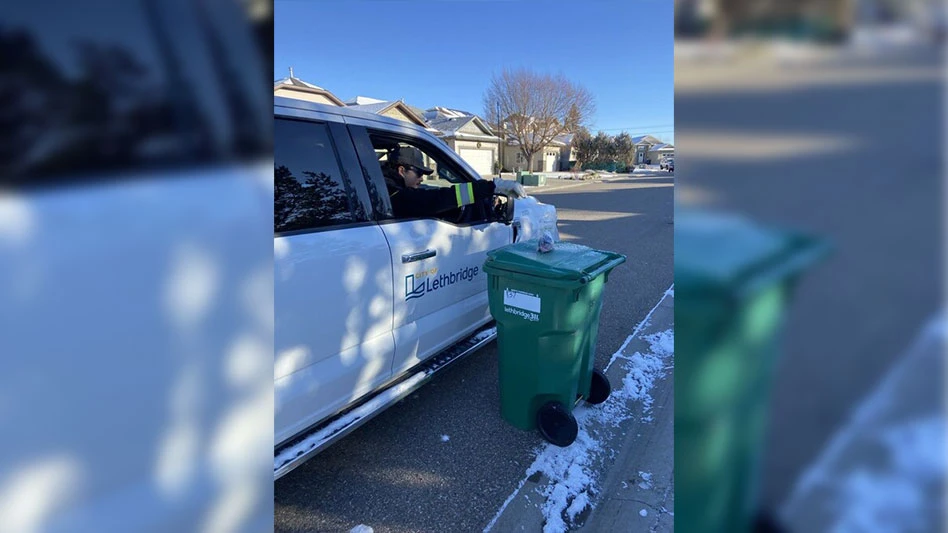
RISI
Confusion and scrambling to make adjustments was part of the recovered fiber story in 2018, but some of those adjustments might bring opportunities, according to presenters at the 2018 RISI International Recycled Fiber and Containerboard Conference, held in December in Shenzhen, China.
For American and European exporters, increased demand for recovered fiber from India has helped soak up some of the tonnage that formerly headed to China, according to trader Inder Aurora of Mumbai-based Tradecom International Pvt. Ltd.
Aurora declared that India has the ability “to be the next China” over the course of the next 20 or 30 years, and said the Indian paper industry has considerable room to grow—and has been doing so at an 8 percent compound annual growth rate in the last five years.
India produced about 17.5 million metric tons of paper and board in 2018, said Aurora, and it used recovered fiber to produce 65 percent of that volume. Of the 13.5 million metric tons of scrap paper consumed by India’s mills in 2018, 7.5 million metric tons (55.6 percent) was imported, he added.
With land for both forestry and agro-fibers scarce in India, Aurora said the nation will require imported recovered fiber for some time to come. “I look at it as a major opportunity going forward,” he told the recyclers and traders gathered in Shenzhen.
Aurora said increased import activity started in 2018 in India because of a “price incentive” caused by the decline value of mixed paper and some old corrugated containers (OCC) on the global market, prompted by China’s tougher inspection regimen. “The volumes of [exported] recovered paper to India will gradually keep going up as the optimal use of installed capacities and the restart of stalled capacities” gets underway, he declared.
Trader Dan Cotter of United States-based CellMark Recycling said recyclers and mill buyers in that nation face shortages of the old newspapers (ONP) and office paper grades because of the decline in print communication. Those grades are thus also less available for export.
Cotter said China’s tougher import restrictions arose in part because of what he called “wish recycling” in United States collection programs. He said single-stream programs have resulted in the declining quality of paper bales, and such programs in the U.S. (as well as in parts of Europe and Australia) may need to change to meet the new standards.
“I’ve seen some pretty horrible stuff shipped,” said Cotter. “Something needed to be done. We in the West need to figure out how to make a better package,” he told the delegates to the Shenzhen event.
Echo Xu, a China-based analyst with conference organizer RISI and its UMPaper affiliate, said that China had “restricted imports of recovered paper in both quality and quantity in 2018.” She said in the first three quarters of 2018, “China’s recovered paper import volumes dropped by 47 percent.”
That spells a dramatic difference from 2000 to 2017, when Xu said China’s CAGR for imported recovered fiber purchases was 3.7 percent. In 2018, however, China was on pace to purchase 36 percent less recovered fiber from the U.S. compared to 2017.
Within China, as imports are restricted, the competition for domestic OCC and scrap paper “will be ever more fierce” leading to 2020, said Xu, when the government intends to ban all recovered fiber imports. This is problematic, said Xu, who estimated that the nation’s OCC collection rate is already 75 percent, and could even be as high as 90 percent considering the number of boxes exported from China.
The 2018 RISI International Recycled Fiber and Containerboard Conference was Dec. 5-7 at the JW Marriott Shenzhen.
Latest from Recycling Today
- Phoenix Technologies closes Ohio rPET facility
- EPA selects 2 governments in Pennsylvania to receive recycling, waste grants
- NWRA Florida Chapter announces 2025 Legislative Champion Awards
- Goldman Sachs Research: Copper prices to decline in 2026
- Tomra opens London RVM showroom
- Ball Corp. makes European investment
- Harbor Logistics adds business development executive
- Emerald Packaging replaces more than 1M pounds of virgin plastic





